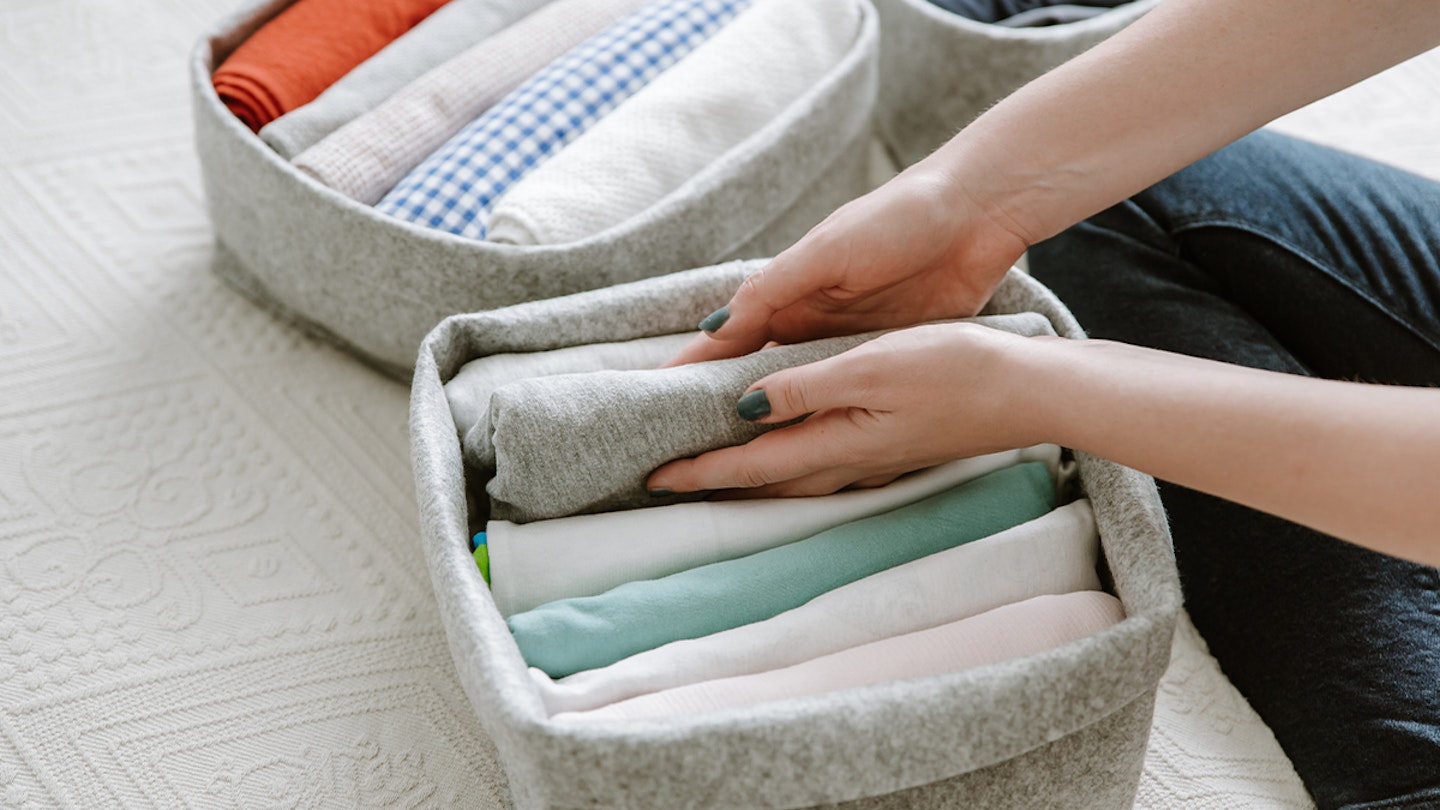There’s nothing more frustrating than taking your favourite shirt out of your drawer only to find it’s a crumpled mess, especially if you’re in a rush and don’t really have time to use the steam iron on it. That’s why knowing how to fold a shirt is so important when putting your clothes away.
If you’ve binge watched the likes of Marie Kondo on Netflix, you’ll know there’s a real skill when it comes to folding a shirt the proper way. Whether it’s got long sleeves or even if it’s oversized, we’ve scoured the web to find the best shirt folding methods to suit any kind of shirt.
If you’re looking to get your drawers and wardrobe organised and neat, then we’re here to help you learn how to fold a shirt with ease.
How to fold a shirt for travel
If you're packing your suitcase, you'll want to do everything you can to make sure your shirts aren't wrinkled when you unpack, especially if you're not sure whether or not there'll be an iron available.
If however you're short on case space, you'll probably want to roll your t-shirts. To neatly roll your shirts and save space, try this neat and compact travel packing method.
- Start by laying out your t-shirt flat and fold along the bottom inside out up to the halfway point.
- Then fold in the sides and the arms neatly before folding the t-shirt lengthways.
- Roll the t-shirt towards the inside out fold and once folded, pull the inside out section over the roll to secure meaning it won't unravel.
How to fold a t-shirt using the KonMari method
If you're folding your shirts ready to be stored in your drawers or on shelves, then we'd recommend the famous KonMari method. Once you've folded your t-shirt into its neat little cube, you'll be able to stack them on their side, allowing you to easily see all your clothes.
- Lay your t-shirt down flat and ensure it's smoothed out. Fold the right side in then the left side.
- Fold the t-shirt upwards then visualise the shirt split into three and make folds where you've visualised this line to create a neat rectangular cube.
How to fold a polo shirt
This one might look a little more technical, but once you've learned the technique, you'll be able to do this with all your shirts. This is a great fold if you're stacking on a shelf.
- Lay the polo shirt flat down faced up. On the left side, pinch along the edge, around an inch away from the start of the sleeve all the way down to the bottom.
- Use your index finger and thumb to pinch the very top of the left shoulder and with your other hand, pinch in the middle of the t-shirt along the left side. Take the pinch from the top left down to the bottom of the shirt before pulling your hands apart to make the folds.
- Fold the remaining sleeve in to create a neat, square shaped fold.
How to fold a button up shirt
This method is ideal for smarter shirts that you don't have room to hang up. If you're folding your shirts for travel, you can even pop it in its own bag to keep it protected during transit.
- Start with your shirt laid out flat, face down, buttoned up and smoothed out. Begin by folding in the arms folding in, up and down giving the arm three folds. Smooth this out and repeat on the other side.
- Follow the arms by folding in the right side and shoulder and then the left leaving you with a long rectangle shape.
- Make two folds upwards towards the collar end to make a perfect square shaped fold and smooth out to finish.
How to fold a t-shirt standing up
If you don't have a flat space available for folding or if you're in a rush, you can easily create the fold when standing up.
- Press the front of the t-shirt against your body and use your fingers to fold in both the left and right side of the shirt.
- Once you have the long rectangular shape, fold the t-shirt into three giving you a similar fold to the KonMari style.
